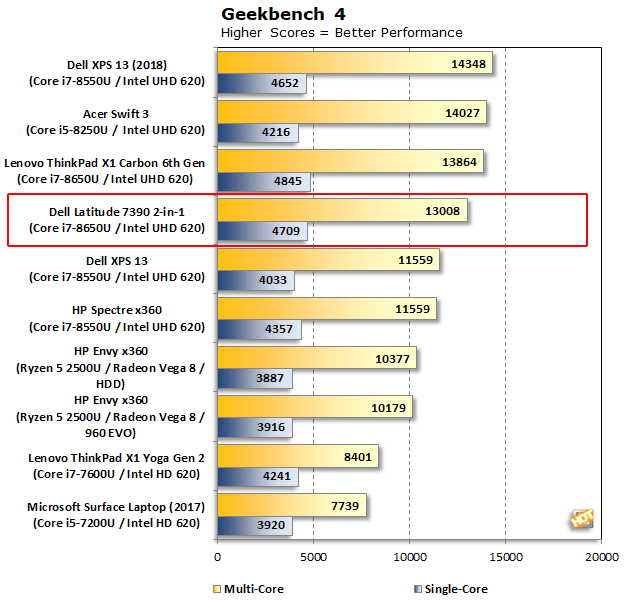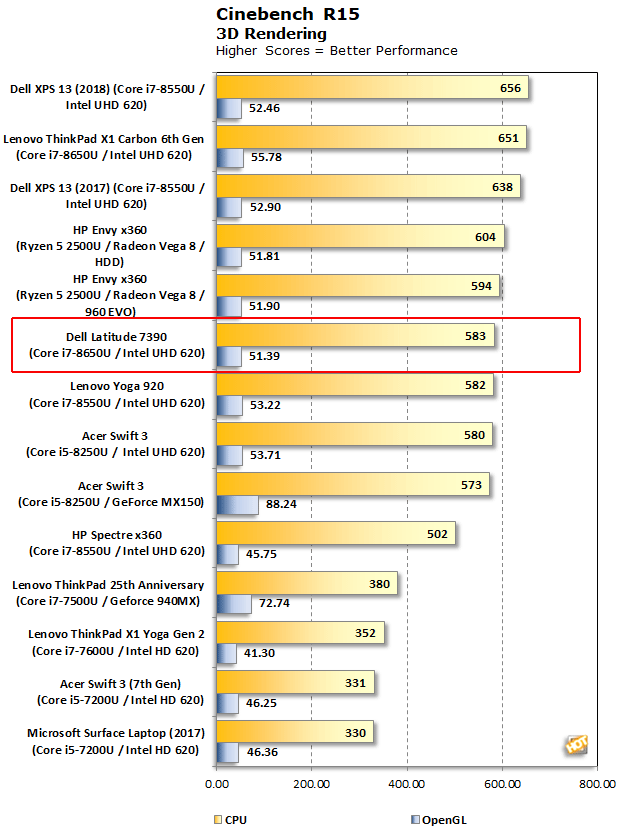Dell Latitude 7390 2-In-1 Review: A Convertible Built For Business
ATTO Disk Benchmark, Testing NVMe Solid State Storage
Geekbench, Cinebench, And SunSpider
We kicked off our general-purpose benchmarks with a cross-platform CPU compute benchmark called Geekbench, and then ran Cinebench R15, a 3D rendering benchmark that tests both the CPU and GPU engines in the processor. Cinebench is developed by Maxon, which is better known for its Cinema 4D software employed in professional 3D rendering and animation studios. We use both of Cinebench’s integrated tests for CPU and GPU.

Geekbench sees the Latitude 7390 2-in-1 trailing the near-equally specced out Lenovo ThinkPad X1 Carbon we tested. In fact, both notebooks are bettered by other models with “slower” CPU’s which leads us to believe the thermal constraints are too tight to properly support Intel’s high end mobile option. The stronger single core performance supports this theory as thermals are less of a concern under such workloads

Cinebench R15 echos our findings above with an even greater divide between Dell’s Latitude 7390 and the Lenovo X1 Carbon. This is, of course, likely due to Cinebench’s longer sustained workload.
We see the Latitude very quickly throttle to just 2.9GHz when we watch clock speeds during Cinebench, a far cry from the i7-8650U’s specified maximum turbo of 4.2GHz. The chip further throttles to 2.5GHz inside of 20 seconds. These results make us question if a lower-tier (and therefore cooler) processor might be better suited for use in this model.

PCMark 10 Benchmarks

The Latitude 7390 2-in-1 again brings middling performance here with numbers that are outclassed by even the i5-8250U wielding Acer Swift 3. The Essentials score may be especially sensitive to the funky read performance results we had in ATTO as it tests application launch times.
Nevertheless, let’s shift gears to the Intel UHD 620 side of the die and see how graphical performance holds up…







